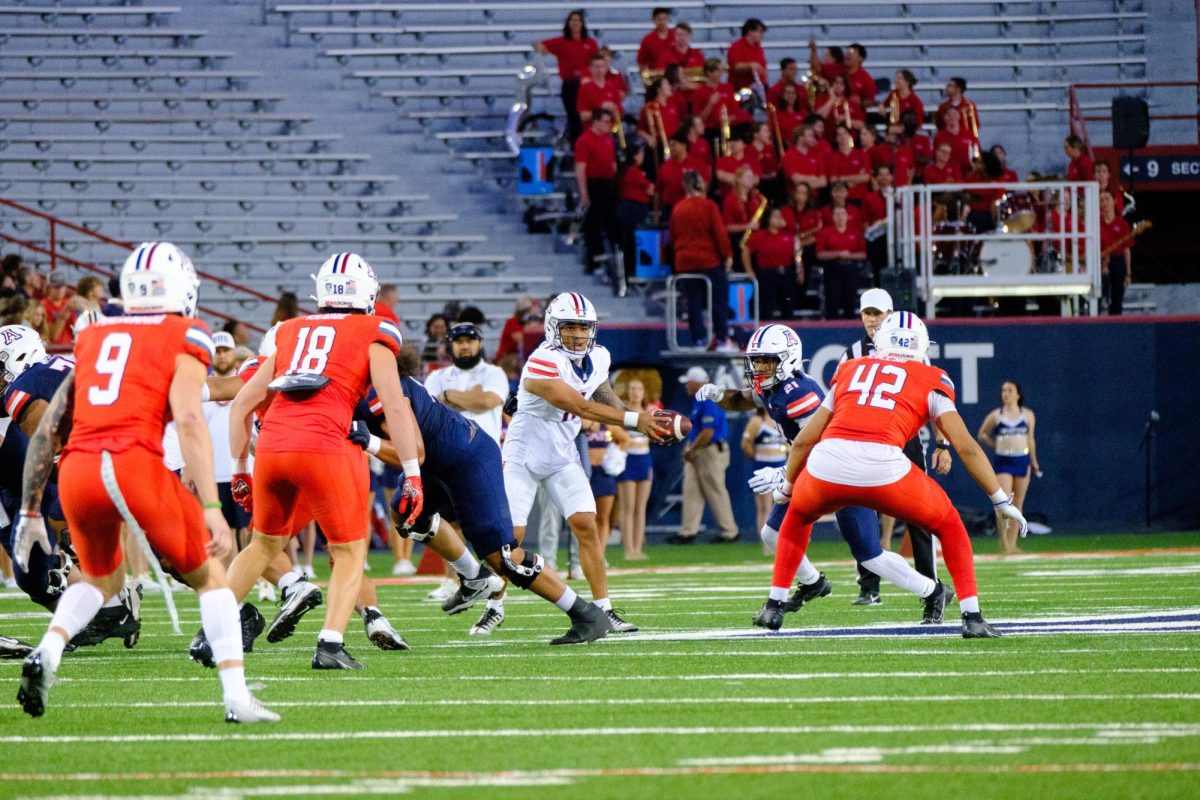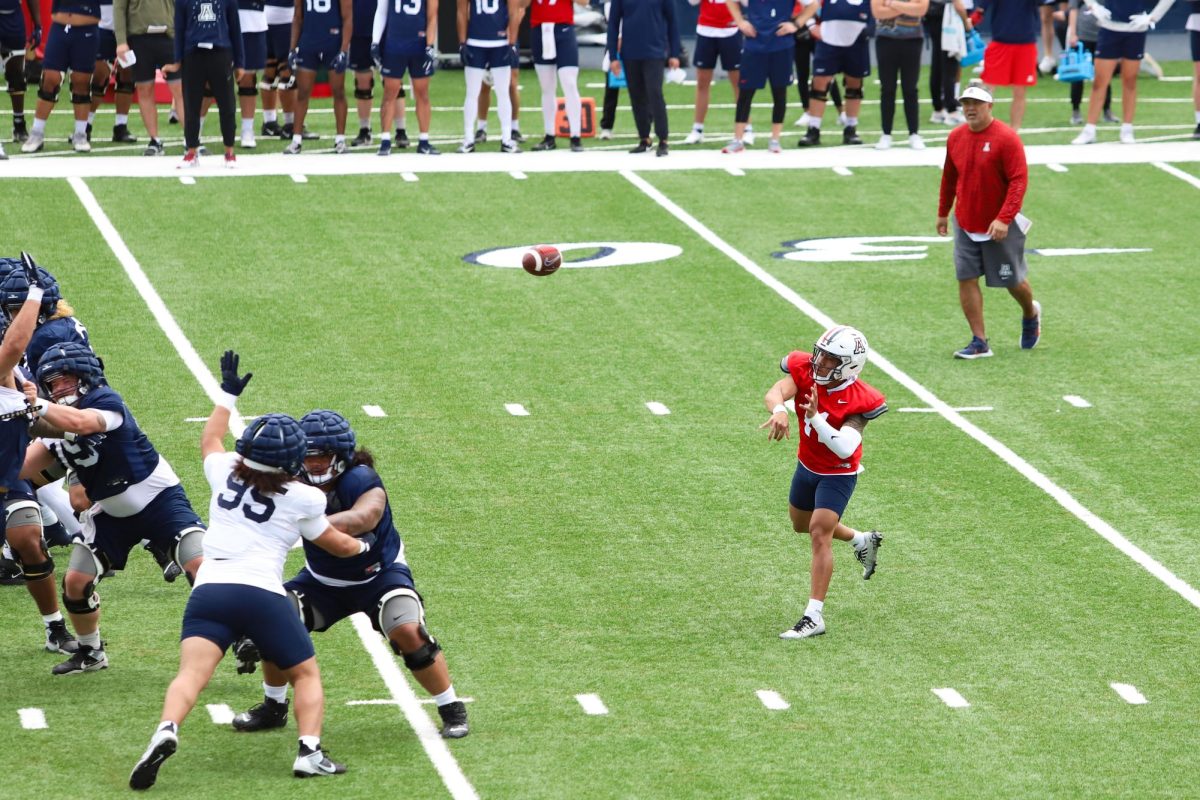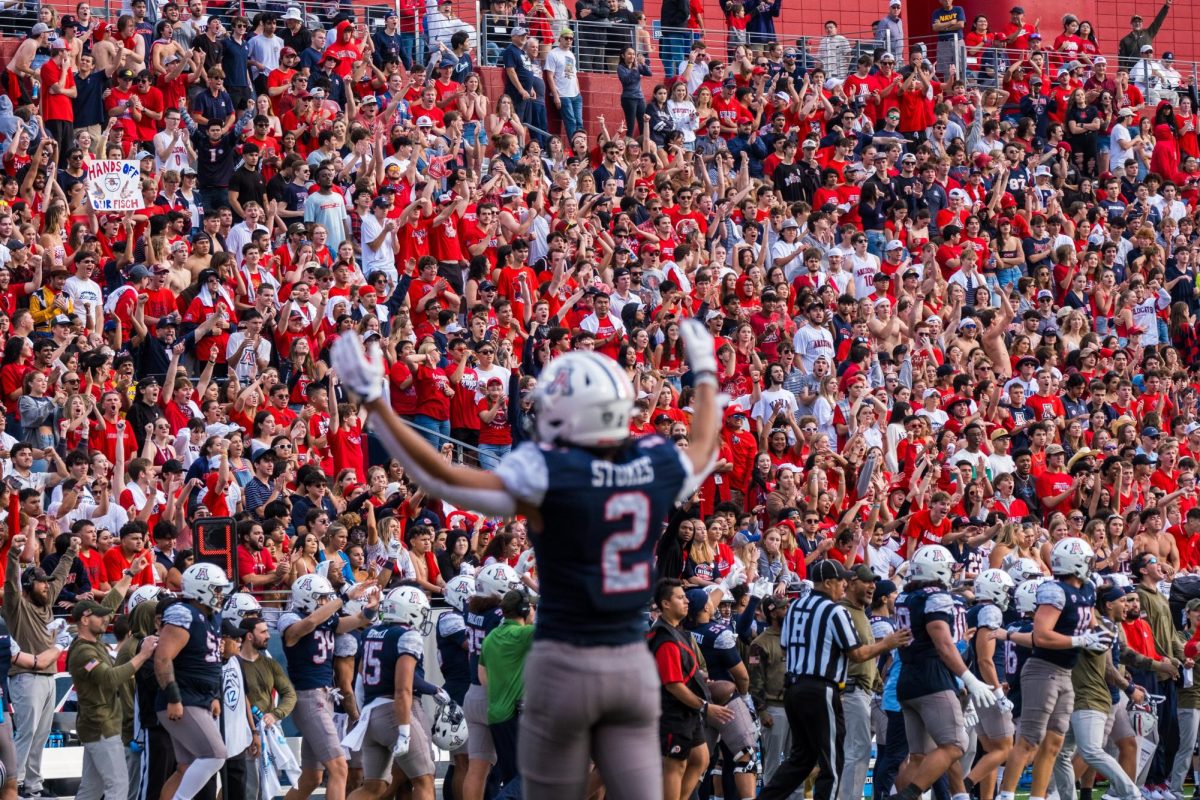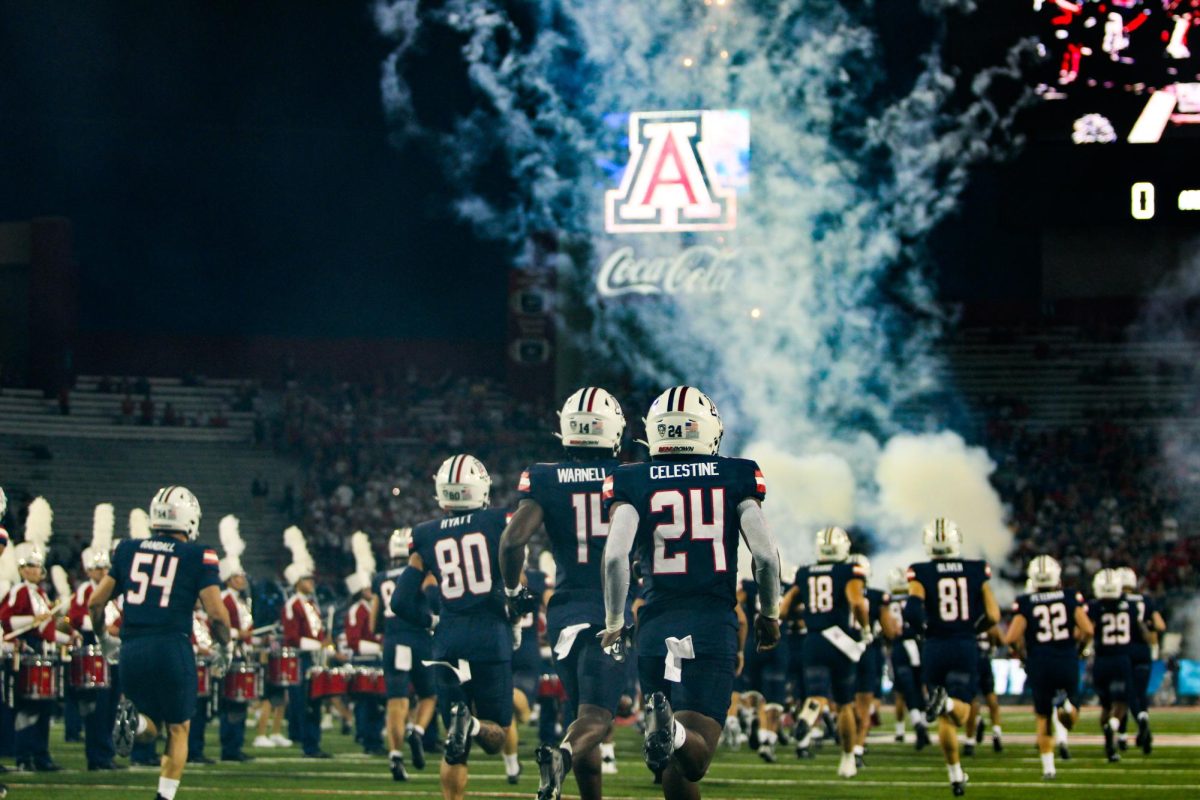Head coach Mike Stoops and offensive coordinator Sonny Dykes acknowledged that the passing game was subpar on Saturday against NAU, but they didn’t place all the blame on the quarterbacks. Apparently it was the receivers that struggled, and even starting quarterback Matt Scott said that he and the receivers would need to watch extra film this week to get on track.
But all wide receivers have to do is catch the ball, right?
It certainly seems that simple, but it’s much more complicated than you’d think. Receivers have to do as much reading of the defense as a quarterback does, because their designated pattern that’s called in the huddle can change at any moment before or even during a play.
Let’s take a look at some of the elements that receivers need to recognize before they decide which route to run on a passing play.
Blitz Recognition
Quarterbacks rarely have enough time to comfortably read a defense and make an accurate throw when there are four defensive linemen rushing them, and they have even less time to react when a linebacker or a defensive back is hot on their tail.
First, the receiver needs to recognize if a blitz is coming and then notify the quarterback. Receivers generally point to the man who they believe is blitzing, and then generally make an audible call to let the quarterback know that he is “”hot”” (it’s sometimes difficult to read since defenses try to mask what they’re going to do, so receivers are generally told to play it safe and point it out anyway).
If the defensive player does blitz, the inside receiver must alter his route to fill the void. Regardless of what pattern he was told to run in the huddle, the receiver simply runs to where the defender used to be and looks for the ball immediately since the quarterback has very little time to throw.
Obviously the possible reward for the new pattern is significantly less than the original one, but positive yards are preferable to a sack. William “”Bug”” Wright did a great job of this in the first quarter against NAU. He recognized the linebacker on a blitz and received the short throw from Scott just before he got hit. He then used his speed to turn a short gain into a first down.
Coverage Recognition
Offensive coaches often talk about setting the tone of the game rather than letting the defense control them, but a lot of what the offense does is dictated by the defense regardless of which is playing better.
Just like a blitz can change the pattern called in the huddle, defensive coverages change it as well.
The most basic route is a “”hitch”” (the receiver runs 7 yards up field, then turns around and receives the ball 5 yards from the line of scrimmage). The receiver leaves the huddle and lines up expecting to run a hitch, but he must first read the corner to decide if a hitch is actually the right move.
Notice how important the depth of the cornerback is. When he is close to the line in press coverage and cover-2 the receiver takes off downfield. In press coverage it becomes a straight “”fly”” route, but in cover-2 it’s more of an abbreviated downfield pattern. Since the safety will generally migrate over the top of the receiver, the wide receiver needs to look for the ball quickly since the quarterback has a much smaller window to throw.
When the corner is further from the line — regular man coverage and cover-3 — the receiver can run his original pattern since he has more room to work. On cover-4 the corners and safeties don’t move backward until the receiver has passed him, so the receiver can exploit that by running a post between the two.
The key to all of this working is whether or not the quarterback and wide receiver can see it and are on the same page. The main reason that the quarterback takes so long at the line before he calls “”hike”” is because he’s trying to read the secondary before the snap so that he has less to do while dropping back.








